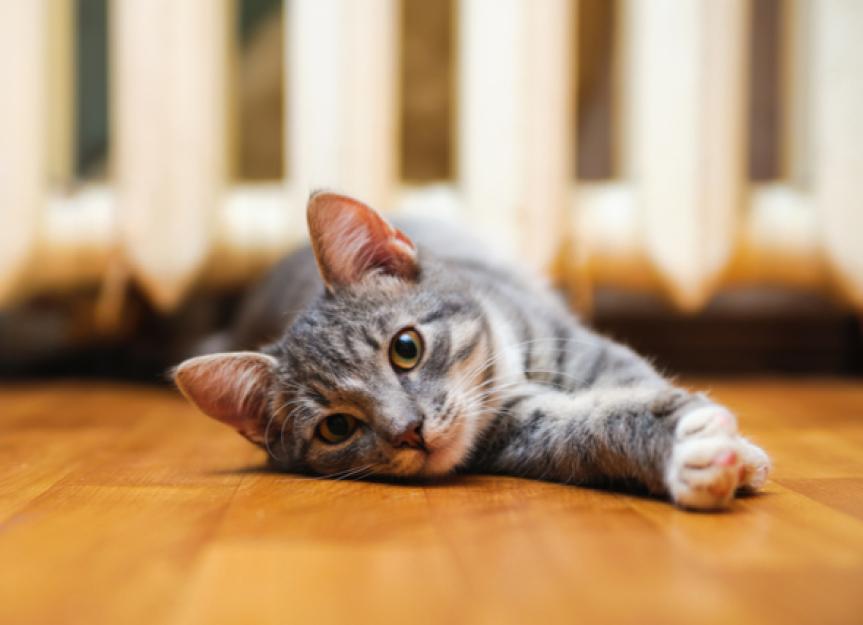How to Prevent Urinary Blockage in Cats
By Jennifer Coates, DVM
One of the biggest emergencies that pet parents can face is urinary blockage in cats. Treatment often involves a panicked trip to the veterinary clinic (usually at the least convenient time possible) and hospitalization for the intensive care and monitoring needed to save the cat’s life.
If your cat has blocked once, he is at high risk for it happening again. So whether you’re looking to prevent a recurrence or to protect your cat from every having to experience this condition in the first place, it’s important to be informed about ways to prevent urinary blockages in cats.
What Causes Urinary Blockages in Cats?
尿路阻塞(也称为urinary obstructions) are usually caused by plugs of proteinaceous sludge, crystals and/or small stones that become lodged within a cat’s urethra—the tube leading from the urinary bladder to the outside of the body. Neutered males have very narrow urethras, which explains why these cats have, by far, the highest incidence of urinary blockages. Urinary obstructions can also be caused by involuntary muscular contractions called urethral spasms or, less frequently, by tumors, infections, trauma and other conditions.
Urinary Obstruction Symptoms
When a cat is blocked, he will frequently squat like he is going to pee, but little to no urine will come out. Urine continues to flow into the bladder, and the pressure and pain increase. Additionally, the toxic waste products that are supposed to exit the body in the urine begin to back up within the bloodstream leading to symptoms like lethargy, disorientation and vomiting. Without timely treatment, a cat’s bladder can eventually rupture. Needless to say, get to your veterinarian immediately if you think that your cat may be blocked.
How to Prevent Urinary Blockages in Cats
In some cases, your veterinarian may identify a particular risk factor that increases the chances that your cat will become blocked. For example, a cat who has a history of developing urinary crystals or stones made of struvite (magnesium ammonium phosphate) will often benefit from eating a food that contains low levels of magnesium and phosphorus and promotes a urinary pH that makes it less likely that crystals will form. If your cat has a history of urinary blockages, make sure to ask your veterinarian about any specific prevention strategies that he or she can recommend.
If the cause of your cat’s urinary blockage can’t be identified or you simply want to prevent the condition from developing in the first place, don’t worry, you still have good options. The following three strategies will go a long way towards lowering the risk of urinary blockages in cats:
- Provide enrichment.Research has shownthat environmental enrichment and stress relief play a huge role in maintaining a cat’s urinary (and overall) health. Stress relief can take many forms. For example, you may need to modify your cat’s living arrangements if he is routinely fighting with other cats in your home. More generally, cats love a regular schedule so keep his routine as predictable as possible. Give your cats lots of opportunities to exercise their bodies and minds. Play with him, and purchase or make newcat toysand rotate through them regularly. Make use of food puzzles. Place perches near windows. Have lots ofcat scratchersavailable.
- Manage thecat litter box.You want your cat to keep his bladder as empty as possible so make his “bathrooms” pleasant and easy to access. Always have at least one more box available than the number of cats in your home and don’t place them all in one out of the way location. Keep all the boxes scrupulously clean. Determine what type of box and litter your cat likes best. Large, uncovered boxes with a deep layer of unscented, clumping litter are generally the most popular.
- Keep your cat hydrated.You cat should be well hydrated so his urine stays dilute. Feed canned food rather than dry. Place several water bowls throughout your house and keep them clean and filled with fresh water. Some cats prefer drinking from a running source of water. An easy-to-cleancat water fountaincan be an excellent investment.
Follow these tips and any advice from your veterinarian and you can rest assured that you’ve done everything possible to protect your cat from developing a urinary blockage.
Help us make PetMD better
Was this article helpful?
